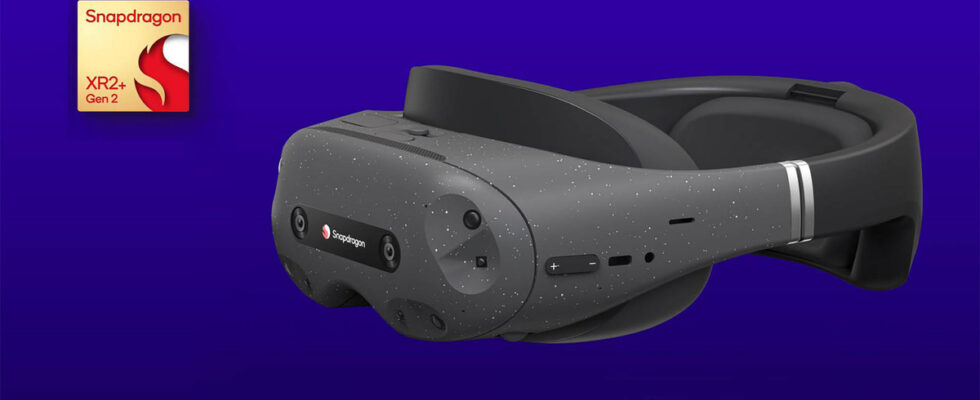Qualcomm announces the processor that will power the next generation of high-end AR/VR headsets: the Snapdragon announced last September. On the technical side, we note increased frequencies for the CPU and GPU parts (+15% and +20%) as well as a new image processor (ISP).
These two improvements, all in all measured, nevertheless offer a gain in processing power sufficient to show significant benefits: support for two 4.3K panels (compared to two 3K panels for the XR2 Gen 2), a display speed ranging up to 90 images per second and the addition of two additional cameras to mount up to 12 camera modules controlled simultaneously.
Evolution of the XR2 Gen 2, this “+” version is still engraved in 4 nm, but its increased frequencies and its new ISP (image processor) greatly improve its performance. © Qualcomm
On paper, we can therefore expect increased precision in the perception and modeling of spaces – particularly in the case of augmented reality – and a potential reduction in the effects of kinetosis (motion sickness) thanks to a frequency of higher refresh rate (although color throughput latency is still 12ms). This ability to know how to recognize (and position oneself in) spaces is called “spatial computing” or spatial computing in French. A word that could be used to designate the different skills of the headsets (AR/VR/MR/XR) as well as the perception capabilities provided by the different sensors (cameras, Lidar, etc.).
Spatial computing (or spatial computing) designates the ability of headsets to perceive the environment and to be able to integrate content into this space. © Qualcomm
Here we must weigh the maximum potential gains in screen refresh rate (up to 90 images per second) and maximum definition per eye (4.3K). If the chip can manage better defined panels and/or offer more fluid movements, it cannot do so at a similar level of detail – in the case where the previous generation chip was already stressed to the maximum. Application designers will therefore have to manage the computational load in order to be able to maintain this definition of 2 x 4.3K at 90 fps. There is no doubt that this level of quality (4K at 90 fps) is now the minimum working basis for the version currently being developed in Qualcomm’s laboratories.
Samsung, Google and others are already on board
Qualcomm has already won over Google and Samsung with its new chip. © Qualcomm
Champion of chips for VR/AR/MR headsets (and other R acronyms), Qualcomm powers the majority of mass-produced references, with notable exceptions being Sony’s PS VR2 (MediaTek) and Apple’s Vision Pro headset. The announcement of the Snapdragon XR2+ Gen 2 is an opportunity for the American to confirm that Samsung and Google are still working with its chips. The two companies as well as “more than five OEMs” have already adopted the XR2+ Gen 2 for their future high-end models, a number of which could emerge at CES being held in Las Vegas next week.
However, expect high prices for these headsets: the Snapdragon XR2+ Gen 2 is positioned at the top of the other chips, which all remain in the catalog to benefit from a range effect. Besides the fact that it is an expensive chip (engraved in 4 nm like the classic XR2 Gen 2), the equipment (4K panels, additional camera modules, larger capacity batteries, etc.) should significantly increase the cost. Invoice.
